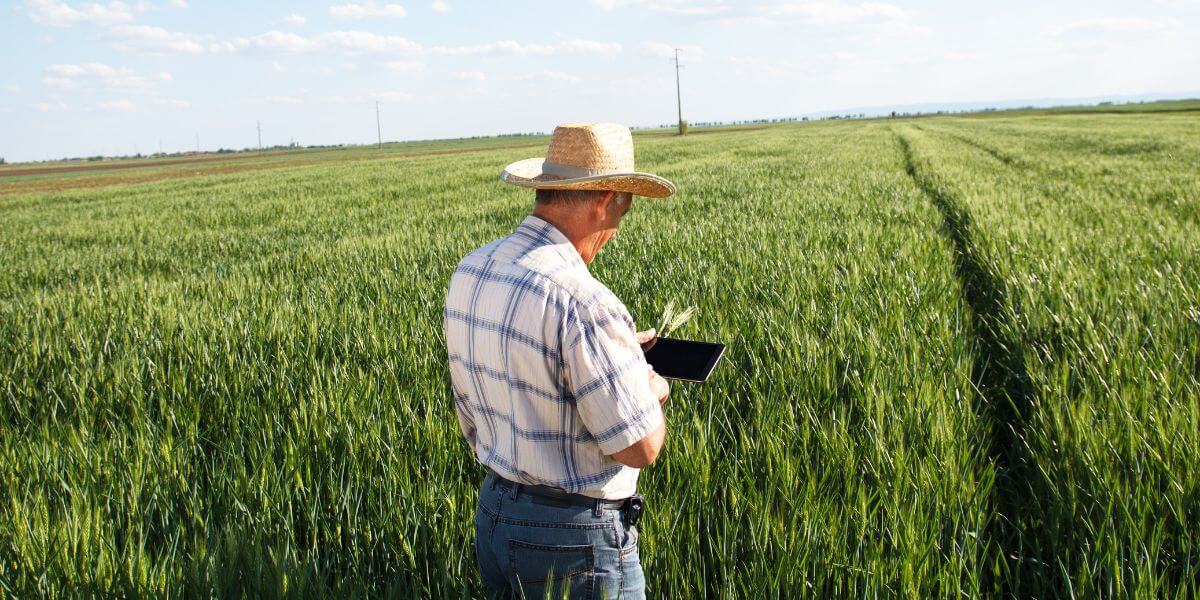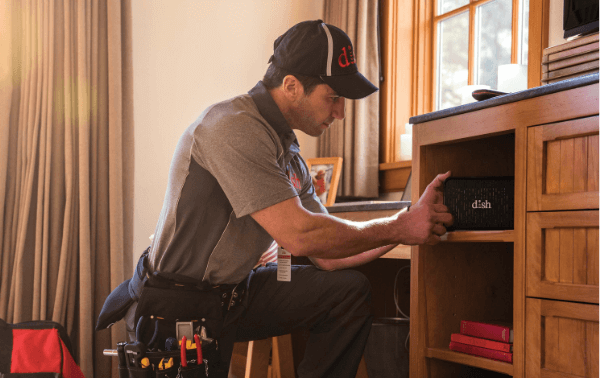Rural Fiber Expansion: New Developments and Government Initiatives
Table of Contents
High-speed internet has gone from being a luxury to something we can’t live without. Yet, millions of Americans in rural areas still don’t have access to reliable broadband. This digital divide between urban and rural communities affects everything from jobs and education to healthcare and overall quality of life.
Thankfully, there’s been real progress in closing this gap, thanks to rural fiber expansion projects, government support, and creative industry partnerships.
The Current State of Rural Broadband Access
Despite progress in expanding broadband infrastructure across the United States, rural communities remain disproportionately disconnected. Approximately 14.5 million Americans in rural areas still lack access to high-speed internet that meets the FCC’s minimum standard [1]. This connectivity gap limits opportunities for residents and businesses in these areas, hindering everything from remote work and distance learning to telehealth services and economic growth.
The growing recognition that rural fiber internet is essential infrastructure—not unlike roads, electricity, and water—has driven increased investment in expanding access. Fiber optic technology offers the most reliable and future-proof solution for rural connectivity, providing symmetrical upload and download speeds necessary for modern applications.
Major Government Initiatives Driving Rural Fiber Expansion
Federal and state governments have implemented several programs to accelerate rural broadband deployment, recognizing its critical importance to national prosperity. These initiatives provide essential funding and resources to support fiber infrastructure development in underserved areas.
The USDA’s ReConnect Program continues to invest billions in expanding high-speed broadband infrastructure in unserved rural areas and tribal lands, with more than $5 billion allocated to date [2]. This program specifically targets areas where at least 90% of households lack sufficient access to broadband service.
Community Connect Grants from USDA’s Rural Development provide financial assistance to eligible applicants for deploying broadband services in economically-challenged rural communities where service doesn’t exist [3]. These grants support the construction, acquisition, or leasing of facilities, including spectrum, to deploy broadband service to residential and business customers, as well as critical community facilities like schools and healthcare centers.
State-level initiatives are also making significant impacts. Ohio recently announced a major investment of $94.5 million through the Ohio Residential Broadband Expansion Grant program to provide affordable, high-speed internet to more than 35,000 households across 23 counties [4]. This program will enable internet service providers to implement fiber-to-the-premises technology delivering gigabit speeds to previously underserved areas.
Real-World Impact of Rural Fiber Expansion

What fiber can do
Expanding fiber internet in rural areas is bringing big changes, opening up opportunities that these communities didn’t have before and improving everyday life in many ways.
Education Transformation
Reliable rural fiber internet gives students in rural areas the same access to educational resources as those in cities. With distance learning, students can connect with teachers and classmates no matter where they are. It also opens up opportunities to explore digital resources, research materials, and specialized programs, helping them broaden their horizons [5].
The development of essential digital literacy skills necessary for success in today’s economy is another crucial benefit. Students can complete homework assignments without traveling to locations with internet access, putting them on equal footing with students in more connected areas.
Healthcare Advancements
The impact of high-speed fiber internet on rural healthcare has been equally significant. Telehealth services allow patients to consult with healthcare providers remotely, reducing travel time and costs—particularly important for rural residents who might otherwise need to travel hours for specialist care.
Remote patient monitoring enables ongoing care management without frequent in-person visits, while access to specialists who might otherwise be unavailable in rural areas improves overall care quality. Improved emergency response through enhanced communication systems can literally save lives, and greater access to health information empowers patients to make informed decisions about their well-being.
Economic Development
Rural fiber infrastructure serves as a catalyst for economic growth and diversification [6]. Remote work opportunities enable rural residents to access jobs previously available only in urban centers, while business attraction and retention improves as reliable connectivity becomes essential for operations.
Advances in agricultural technology that boost farming efficiency and productivity depend on strong connectivity. In tourism, better visitor experiences and services drive growth. And for small businesses in rural areas, reliable high-speed internet opens the door to reaching customers far beyond their local markets and competing on a global scale.
Challenges in Rural Fiber Construction
Despite the clear benefits, several significant challenges affect the pace and scope of rural fiber deployment.
Bringing broadband to rural areas comes with some big challenges. With fewer people spread out over large areas, the cost per connection is much higher than in cities, which makes it hard for providers focused on profits to justify the investment. On top of that, tough terrain like mountains, forests, and lakes makes construction more complicated and expensive.
Long distances between potential customers require more infrastructure investment, and many rural communities have limited financial resources to support deployment costs. These economic realities have historically made rural fiber expansion less attractive to commercial providers without additional incentives or support.
Beyond economics, technical and regulatory issues further complicate expansion efforts. Permitting processes can be complex and time-consuming across different jurisdictions, while rights-of-way negotiations with multiple landowners may delay projects. Limited availability of skilled labor in rural areas to build and maintain networks also presents an ongoing challenge, and technological limitations in reaching the “last mile" to connect individual homes and businesses often require extra-creative solutions.
Innovative Solutions and Partnerships

How fiber is getting to users
Even with these challenges, creative approaches are accelerating rural fiber deployment.
Electric cooperatives have emerged as key players in rural broadband expansion. By leveraging existing infrastructure and rights-of-way, these organizations can deploy fiber more efficiently than starting from scratch. They’ve secured significant funding from federal, state, and local sources (over $2 billion so far) and are building thousands of miles of fiber annually to connect previously underserved areas. [7]
Their efforts have brought high-speed broadband to over 1.1 million rural Americans, demonstrating how local organizations with deep community connections can effectively address connectivity challenges. The cooperative model, with its focus on community benefit rather than profit maximization, is particularly well-suited to rural broadband deployment.
Public-private partnerships have been a great way to expand rural fiber internet. By working together, governments and private companies can share the investment, making it less risky for providers to enter rural areas. Streamlined permitting and access to public infrastructure help speed up deployment, while combining expertise leads to better network design and implementation.
When communities get involved, they ensure the solutions actually meet local needs instead of relying on one-size-fits-all approaches. Plus, involving the community often boosts adoption rates, which helps make these networks more sustainable in the long run.
The Future of Fiber Internet in Rural Areas

The future of rural fiber
The momentum behind rural fiber expansion shows no signs of slowing, with several key trends shaping its future.
Emerging technologies are helping overcome traditional barriers to rural connectivity. Improved construction methods that reduce deployment costs make previously uneconomical areas viable for fiber installation. Hybrid network solutions combining fiber with wireless technologies provide comprehensive coverage even in challenging terrain, while enhanced network management tools optimize performance and reliability.
As the importance of universal broadband access gains recognition, funding approaches continue to evolve. Increased federal and state investments targeting unserved and underserved areas reflect the growing political consensus around broadband as essential infrastructure. Greater emphasis on affordability alongside physical infrastructure ensures that connection availability translates to actual adoption and use.
Long-term, future-proof sustainability planning for ongoing maintenance and upgrades is becoming standard practice, recognizing that initial deployment is just the beginning of providing lasting connectivity to rural communities. This holistic approach considers not just the technology but the entire ecosystem necessary to support ongoing rural broadband access.
Building a Connected Future for Rural Communities
Expanding rural fiber is a major step toward closing the digital divide and making sure all communities can thrive in today’s economy. Thanks to government support, innovative partnerships, and advances in technology, high-speed fiber internet is becoming more accessible for rural areas across the country.
These efforts reflect the growing understanding that broadband isn’t a luxury anymore—it’s a necessity. As rural fiber networks continue to grow, they’re set to transform rural America, opening up new possibilities for education, healthcare, economic growth, and improving quality of life for millions.
Sources
[1] FCC. “Implementing the Infrastructure Investment and Jobs Act."
[2] USDA. “ReConnect Loan and Grant Program."
[3] USDA Rural Development. “Community Connect Grants."
[4] U.S. Department of the Treasury. “Ohio CPF Allocation."
[5] National On Demand. “Rural Fiber Construction: 3 Aspects for Innovative Connectivity."
[7] NRECA. “Co-ops Win Big in New $2 Billion Round of DOE Grid Funding Program."






 Call
Call 

 Access Your Account
Access Your Account